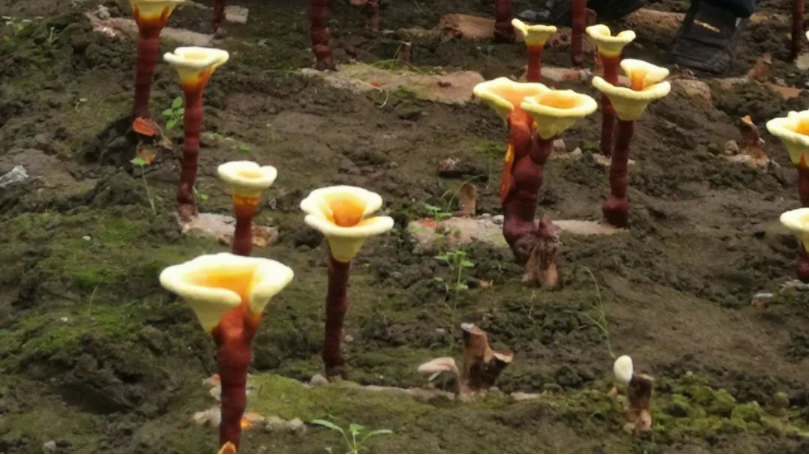Ganoderma lucidum imitation wild cultivation technology

Ganoderma lucidum is a precious traditional Chinese medicinal material with a history of more than 6,800 years. It has the functions of regulating immunity, anti-tumor, protecting liver and detoxification, anti-aging, anti-neurasthenia, and lowering blood sugar. Favored by the masses of the people, the market demand has grown steadily. Due to the problem of continuous cropping obstacles in the soil-covering cultivation mode of Ganoderma lucidum in the field, the conflict with the competition for grains is very prominent. The mountainous areas of Zhejiang, Sichuan, Fujian, Guangdong and other mountainous areas in China are rich in forest resources, and the imitation of wild Ganoderma lucidum under the forest has broad development prospects.
Ganoderma lucidum strains cultivated under forests should be polysporous or oligosporous according to the purpose, and high-quality strains with high yield, stability and strong stress resistance suitable for local planting should be selected as far as possible to ensure high yield and high quality. Duan wood does not have high requirements on tree species, except pine, cypress, eucalyptus, camphor and other tree species with more oil and pungent odor, other broad-leaved tree species are acceptable.Tree species such as Fagaceae and Cork oak are more suitable for their hard wood and little heartwood.The diameter of the segment must be more than 6 cm, protect the bark, and cut it into 15-30 cm long segments when the moisture content is 38% to 45%;Bag tightly, sterilize by high pressure steam at 121°C for 2 to 3 hours; sterilize at 100°C at atmospheric pressure for 18 to 24 hours, and inoculate in sections from mid-November to late January of the following year.
Inoculation and Mycelial Culture
The inoculation room is a room with well-sealed doors and windows, a dry site, good sanitation conditions, and easy cleaning, and an equal inoculation tent is made of plastic film inside. 8 to 12 days before inoculation, disinfect the inoculation room and inoculation tent with disinfectant, and start inoculation when the temperature in the sterilized wooden bag is cooled to 30 °C. Before inoculation, the inoculation tools should be disinfected with bleach powder, and the inoculation personnel should be disinfected with ultraviolet light or alcohol. and inoculated in a sterile room. After inoculation, the time for 70 to 90 days for Duanmu to develop bacteria, the temperature of the culture room should be 20 to 25 ℃, the relative air humidity should be maintained at 50% to 60%, and it is required to cultivate in a dark environment and maintain ventilation.
Planting site selection
During the growth of Ganoderma lucidum, environmental factors such as light, temperature, water, and air are crucial to its yield, biological efficiency and quality. The optimum growth temperature of Ganoderma lucidum is 25-28℃. Cultivation sites should be selected in ventilated, pollution-free, loose soil forest land for understory planting, and the forest land canopy density is above 0.6. Where the light is strong in the woodland, auxiliary shade nets are needed to block the light.
Imitation wild planting under forest
From April to May, when the soil temperature reaches above 15 ℃, choose a sunny day to discharge, and discharge bacteria sections of 10 to 20 cubic meters per mu, and plant more on flat forest land.Place the Ganoderma lucidum sticks with the bag film removed in the bed, and lay 2-3 cm thick fine soil on the upper layer, and then cover the litter. If the soil is moist, it is not necessary to spray water after covering the soil; if the soil is relatively dry, after covering the soil, spray water for moisturizing or cover with straw or breathable plastic film for moisturizing. After the sesame is released, it needs to be kept moist and ventilated. After the Ganoderma lucidum sticks (Ganoderma lucidum) are covered with soil, use a plastic film to support the Ganoderma lucidum shed with a height of 50 cm to cover the whole ridge. After the tender edge of the Ganoderma lucidum mushroom cover disappears, remove the Ganoderma lucidum shed to ensure the tenderness of Ganoderma lucidum during the growth stage. Tissue can grow fast and healthy, promote the growth of Ganoderma lucidum and increase the production of spore powder. During the harvesting period, after each batch of Ganoderma lucidum is harvested, 1-2 cm of soil needs to be added to the harvested area. After the frost falls, the sesame production stops, and at the same time, a layer of fine soil or straw and fallen leaves are added to the planting area to prevent frost.
Under normal circumstances, in the middle and late March of the second year, young mushrooms can be seen on the bacteria sticks buried in the previous year. At this time, it is necessary to manage the mushrooms. When there are few weeds in the forest, weeding is generally not needed to achieve the original ecological growth environment. Ganoderma lucidum is cultivated with segmental wood, which can be maintained for 2 years.
Pest Control
In the process of Ganoderma lucidum cultivation, management and protection, the basic principle of "prevention first, comprehensive prevention and control" should be followed, the pollution of bacteria should be controlled strictly according to the operating procedures, and environmental sanitation should be done well.In the process of Ganoderma lucidum production and management, try to create ecological conditions that are suitable for the growth and development of Ganoderma lucidum but not conducive to the occurrence of diseases, insects and bacteria, so as to achieve the purpose of effective prevention and control, achieve non-toxic and pollution-free control, and ensure the quality and safety of Ganoderma lucidum products.
Harvesting and Processing
Fruiting bodies are generally harvested from August to September. Fruit tree shears can be used to cut the fungus cap at 1.5 to 2 cm of the stalk of Ganoderma lucidum. To achieve immediate harvesting and drying, drying can use a drying room or a special dryer, and control the temperature to 45 ~65℃, control the water content below 13%.

(1)(1).jpg)
 CONTACT
CONTACT